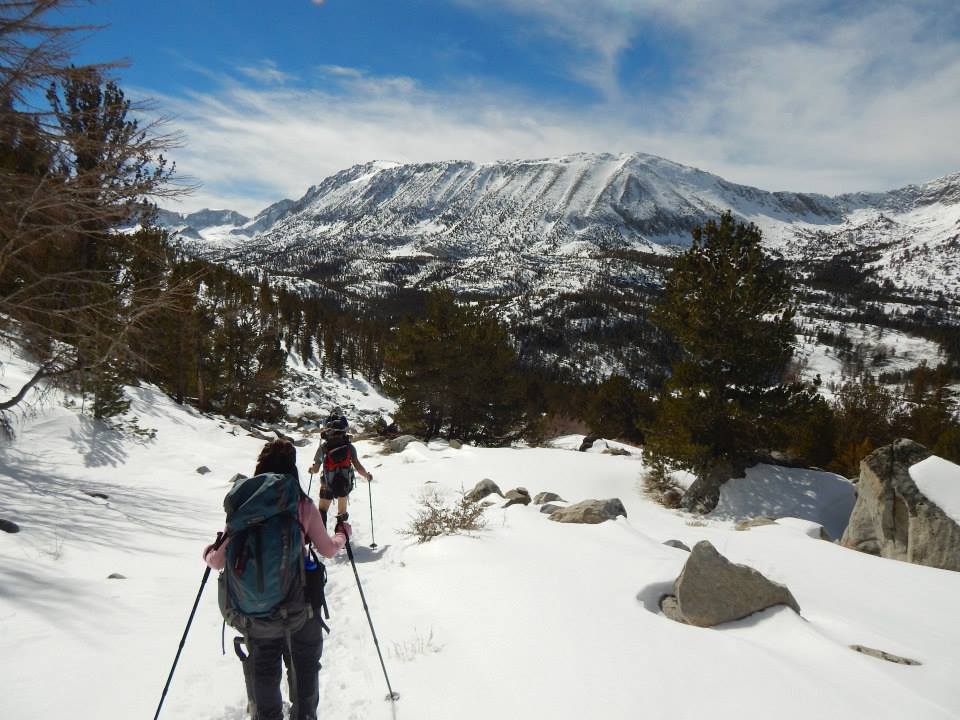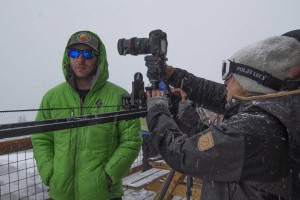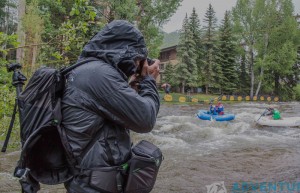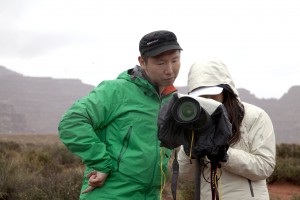
Venturing into the outdoors with camera gear is both an exciting and terrifying proposition. Your creative mind is probably racing in overdrive at the thought of spending several days (or even weeks) in the wild, but your practical side might suffer visions of dust-splattered sensors, mud-smeared lenses, and roughhoused casings. The deeper you travel into the backcountry, the more important it becomes to think critically about how to protect your gear. Luckily, we have a few tips and tricks to help keep your equipment safe from dirt, weather, and hard knocks – although you’ll have to figure out how to deal with curious bears on your own.
Gear selection

In an ideal world, we are all swimming with money and the best gear it can buy – but of course, that’s not usually the case. While most high-end equipment is designed to withstand the elements (and really, the enemies – namely, dust and water), many of us are working with less-than-perfect gear and will need to adjust our methods for backcountry shooting. Consider your stash with a critical eye before packing. What is your most durable gear and do you mind if it gets banged up a bit? Should you rent some pieces instead? What is absolutely necessary for your project, and what can actually stay at home? The more you streamline and optimize your adventure kit, the less you’ll have to take care of on the trail.
Research conditions
Adopt the maxim “Know before you go.” Visit the National Weather Service website to
find an accurate forecast for your projected location(s), but also think broader than just local weather. Are you traveling in the desert or during monsoon season? Will you be in high elevation where temperatures routinely dip below freezing at night? Is humidity a factor where you’ll be hiking? Knowing what kind of conditions you might face while on the trail will help you pack the most appropriate gear.
Use protection

While it’s possible to bang up your camera gear while standing right on your own front lawn, the potential for major damage increases the further you venture into the backcountry, where things like boulders and tree roots conspire to whack your pack and trip you up. Even if you’re not using a film-specific backpack, you’ll want to tote along some kind of padded bag to house your most sensitive equipment. This is doubly important if you plan on heading off-trail; ensure your gear is safely stowed in your pack, or at the very least tucked inside a snug-fitting belt or chest harness, before scrambling around in steep, rocky terrain. Bring along small bungee cords, zip ties, paracord, or straps to keep tripods and other items securely lashed to your pack.
Battle dust monsters
Make peace with the fact that there’s no escaping dirt and dust while out on the trail. No matter how often you clean your camera (and you should be doing this frequently while working outdoors), the specks will return again and again. While you can certainly edit out dust spots in post-production, you still want to minimize their impact on your rig. Bring along a small lens brush, microfiber cleaning cloth (stored inside a small case or baggie), and a blower. When you’re dusting or changing lenses, ensure your camera is pointed downward – and if possible, use your jacket, a tarp, or tent as protection to minimize the intrusion of ambient dust particles. A lens cap is crucial, of course, so you might want to bring an extra – or just carry a few shower caps, which make for cheap on-the-go dust barriers; filters work, as well. Avoid laying your gear directly on the ground or on natural objects, if possible. Instead, hang it or set it down on a small tarp or tent footprint to offer a bit of a barrier. Gallon-sized zip-top freezer bags are also great for lightweight, simple protection – toss a few in your pack; they’ll come in handy more than you realize.
Prep for precipitation

While not always as ubiquitous as dust, water is the other main concern when heading outside with your gear – rain, condensation, and spray from wily waterways can all wreak havoc upon film equipment. A first line of defense is to make your backpack as water-resistant as possible if it’s not already, with a rain cover, trash compactor bag liner, external waterproofing treatment – or all three. Even better, make sure you have waterproof casings for your gear, especially your camera body (if it’s not already weather-sealed), lenses, drives, and cards. Pelican makes some great backpacking-friendly hard-sided options, but you might also consider any variety of dry bags or waterproof stuff sacks for more versatility. Add an extra layer of protection by packing a poncho or large rain jacket, as well as a small umbrella – Montbell makes one that is particularly lightweight. If the forecast calls for humidity or if you’re going to be in an environment where the weather is likely to swing through extremes, pack along a little patience, since you may need time for your gear to acclimate to conditions in order to help reduce the possibility of fogged-up lenses and screens. If things get too moist, toss a few small desiccant packets (i.e. clean, unused versions of the type that come in freeze-dried meals) into a sealable bag with your gear and let them work their dehydrating magic.
